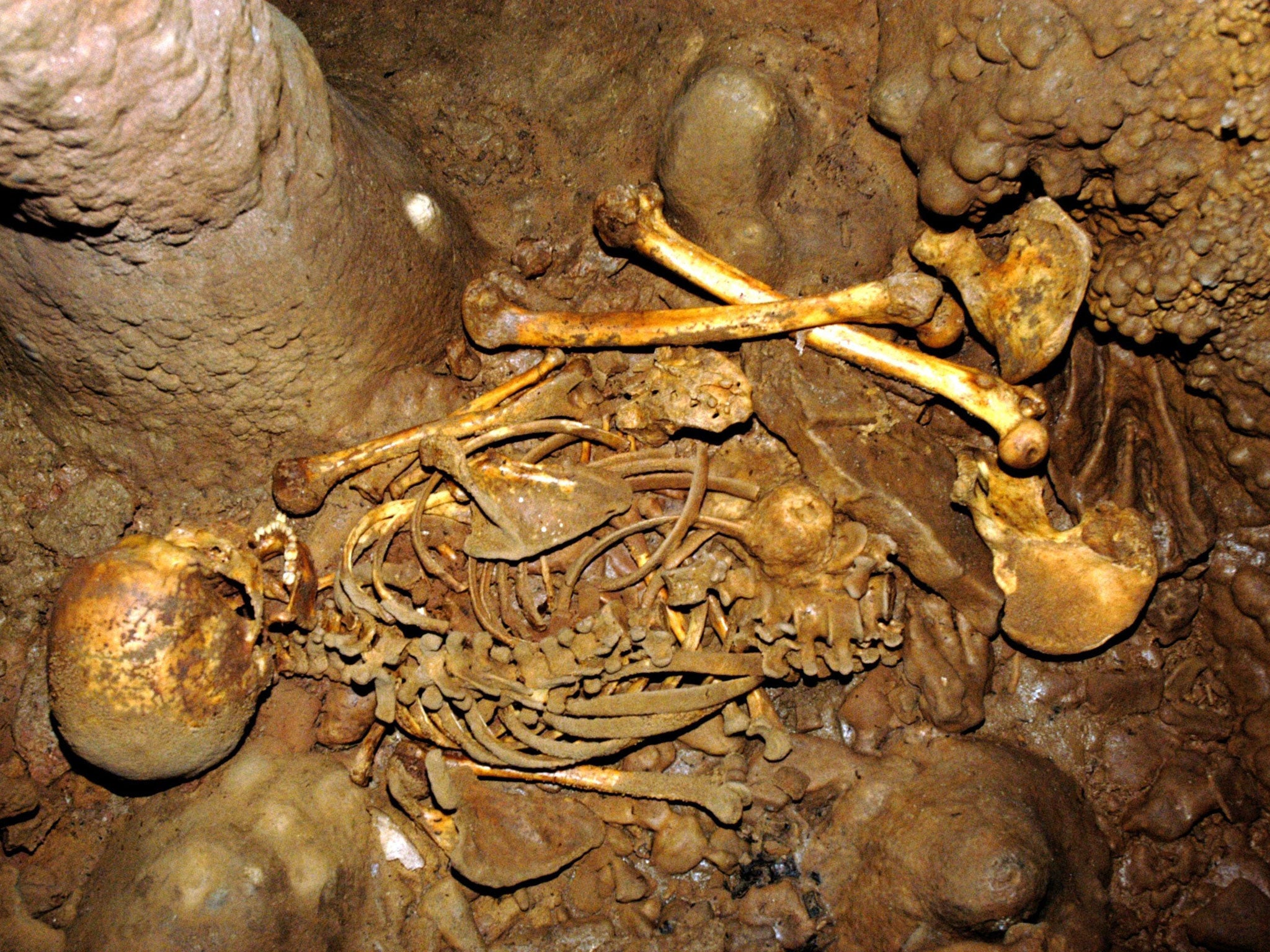Revealed: First Ol’ Blue Eyes is 7,000 years old and was a caveman living in Spain
DNA analysis of the man’s tooth has also disclosed that he had the dark-skinned genes of an African

A Stone Age man who lived about 7,000 years ago and whose buried bones were discovered in 2006 has turned out to be the earliest known person with blue eyes, a physical trait that evolved relatively recently in human history, a study has found.
A DNA analysis of the man’s tooth has also revealed that although he was more closely related to modern-day Scandinavians that to any other European group, he had the dark-skinned genes of an African, though scientists do not know his precise skin tone.
The man, who was about 1.7m (5ft 7in) tall and aged 30-35, was a Mesolithic hunter-gatherer rather than a farmer. He did not have the “lactose-tolerance” genes that allowed him to digest milk as an adult – a key sign that he had little or no contact with domesticated livestock.
His well-preserved skeleton was one of two discovered in 2006 in a deep cave system called La Braña-Arintero near León in north-west Spain, which is 1,500m above sea level and cold enough to limit the bacterial decay of DNA.
Dating has placed the skeletons in the middle of the Mesolithic period, which lasted between 5,000 and 10,000 years ago and represents the interlude between the older Palaeolithic and the more recent Neolithic, when agriculture and livestock farming spread from the Middle East and became widespread across Europe.
Artist's impression of the 7,000 year-old man
Show all 5The study, published in the journal Nature, sequenced fragments of DNA extracted from the man’s tooth, revealing that he carried an unusual combination of genes for blue eyes and dark skin – as well as for slightly curly, dark-brown hair and lactose intolerance.
“The biggest surprise was to discover that this individual possessed African versions of the genes that determine the light pigmentation of the current Europeans, which indicates that he had dark skin,” said Carles Lalueza-Fox of the Institute of Evolutionary Biology in Barcelona.
“Even more surprising was to find that he possessed the genetic variations that produce blue eyes in current Europeans, resulting in a unique phenotype [physical type] in a genome that is otherwise clearly northern European,” Dr Lalueza-Fox said.
“Blue eyes in modern humans are related to the same mutation in a gene called HERC2. If you have this mutation in both copies of the chromosome, you will have blue eyes for sure. This was the case with this man, who is so far the oldest known individual with blue eyes,” he said.
Previous research published in 2008 found that the earliest mutations in the eye-colour genes that led to the evolution of blue eyes probably occurred about 10,000 years ago in individuals living in around the Black Sea.
This study suggested that everyone with blue eyes today can trace their ancestry back to the same family in which this mutation first arose – and that the gene had travelled across Europe before the shift from hunting to farming, which is known to have spread from the east to the west.
It is not clear why blue eyes spread among ancient Europeans. One theory is that the gene could have helped to prevent eye disorders due to low light levels found in European winters, or that the trait spread because it was deemed sexually attractive.
Subscribe to Independent Premium to bookmark this article
Want to bookmark your favourite articles and stories to read or reference later? Start your Independent Premium subscription today.

Join our commenting forum
Join thought-provoking conversations, follow other Independent readers and see their replies